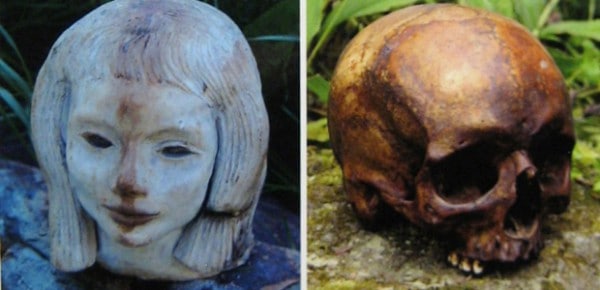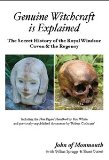
 Genuine Witchcraft is Explained, by John of Monmouth
Genuine Witchcraft is Explained, by John of Monmouth
Capall Bann Publishing, 9781861633347, 486 pp., 2012
If your concept of witchcraft is composed exclusively by the modern Pagan movement and Wicca, this book is going to be a real eye-opener. For the majority of Wiccans and witches in the US, where I reside and write my reviews, there have been few choices – one either “trained” as an eclectic (usually by means of reading one or more books) or one looked for a “tradition” to follow (many of which touted themselves as having a long, distinguished linage, but failed to provide any substantiation of those claims). Within the past couple of decades the concept of initiation by another has fallen into disrepute and “self-initiation” has become the norm.
This is a massive book, but fully one half of it is composed of data which supplements the first half. The supplemental section includes photos of original documents from the Royal Windsor Coven (no connection to British royalty – just a heads-up to American readers). A large number of the documents which appear in the photos are almost indecipherable, since they were either hand-written, heavily amended, or carbon copies of originals. This is, in my opinion, not a shortcoming. The fact that these documents still exist at all is nearly miraculous, and the fact that they are being preserved and made available is a real benefit for those who wish to explore the development of Witchcraft in the 20th Century. Following these reproductions are transcripts of the documents which make it possible to read and understand the preceding illustrations.
There have been lots of rumours about the early days of public witchcraft in England. The few facts which have made it into print have been circumspect and scattered through a variety of books and magazine articles. This is one of the few books I have seen which contain not only the real information, but citations which allow the reader to check sources for themselves. It has gathered together, in one easily accessible place, a multitude of sources and details.
The first portion of this book covers the Royal Windsor Coven and the Regency, two influential groups in Britain. This is followed by “The New Pagan Handbook” which offers suggestions (and nothing more) for the celebration of Pagan rituals. “The New Pagan Handbook” was authored by one of the individuals responsible for the running of the Royal Windsor Coven, and thus offers insight which differs substantially from the more modern conception of Paganism.
For those individuals who are interested in the history of the early development of modern day Paganism and witchcraft, this book is nothing less than an invaluable resource. This book deserves to be in every coven library (do covens even maintain libraries any more?), as well as in public libraries. Every once in a while I recommend purchasing an extra copy of a book so a copy can be donated to a university or public library. This is one of those books.
I feel that the value is especially good for those readers who do not reside in the UK, and thus may not be familiar with either the Royal Windsor Coven or the Regency. Reading this book will expand your knowledge of the Craft outside the Gardnerian/Alexandrian model, and that is an excellent idea.







